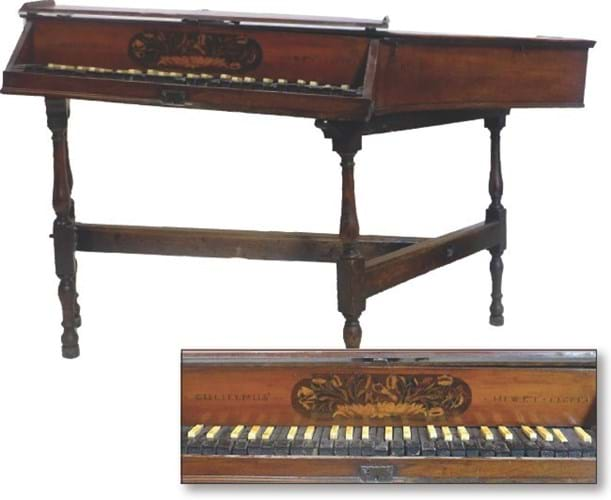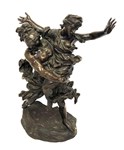The instrument includes a number of early features including an oak stand and a keyboard with ebony naturals and ivory accidentals (the reverse of the modern pattern found in most 18th-century English instruments). Inlaid to the nameboard with a typical Willam and Mary period marquetry panel of flowers, it is inscribed Gulielmus Hewet Fecet.
William Hewet, an apprentice to the keyboard maker John Player, was made free of the Joiners’ Company in November 1687. Only a couple of instruments by him are recorded.
The winning bid on August 12 for this example, that will require extensive restoration, came via thesaleroom.com.
Bentside spinets (small versions of the harpsichord) first became fashionable in England during the Restoration period. John Player and Charles Hayward were the best-known makers.
In April 4, 1668, Samuel Pepys wrote in his diary: Took Aldgate Street in my way, and there called upon one Haywardthat makes virginalls, and did there like of a little espinette [spinet] and will have him finish it for me, for I had a mind to a small harpsichon, but this takes up less room, and will do my business as to finding out chords, and I am well pleased that I have found it.
Three months later, on July 15, Pepys recorded that the instrument was delivered to his house.















